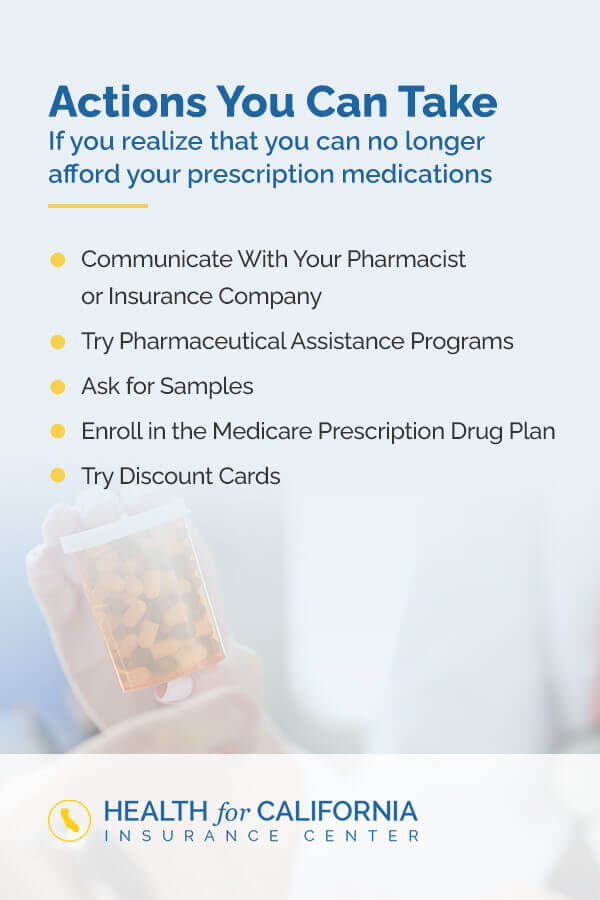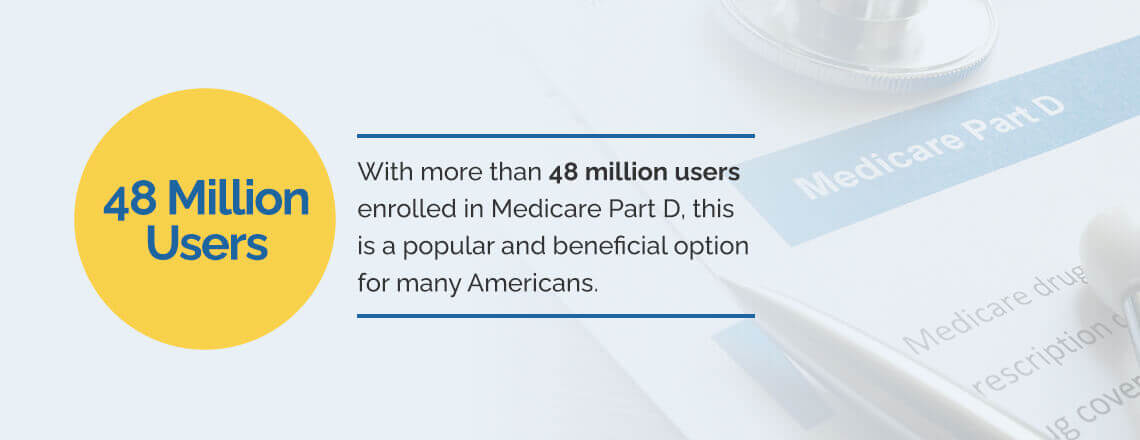What to Do if Your Prescription Medications Are Too Expensive
Posted: July 13, 2022
Around two-thirds of Americans take at least one type of prescription drug, making these medications essential components of health care.
Unfortunately, many Americans also find it challenging to pay for their medications. These medications can be expensive and typically need constant refills throughout the year. Many individuals that can’t afford medication choose to go without them, which can be dangerous for their health.
It’s crucial to find alternative payment options for prescription medications so you can manage pain and disease with what you’re prescribed. Read on to see how to pay for your prescriptions.
The Rising Cost of Prescriptions
As the years pass, the cost of prescription drugs keeps rising. The increase is unsettling for many Americans that rely on these drugs to manage daily life.

Why are prescription drugs so expensive? Here are a few reasons:
- Drug necessity: For many new drugs, no alternatives have been introduced, and an increased reliance grows. For example, drug treatments for cancer must be taken sequentially, with each patient relying on them for relief. Drug companies set prices, and patients pay them out of a lack of other options.
- Slow development: Drugs cost more because they often take many years to produce. Their creation is also expensive, as they must go through many stages of testing and experimentation before approval. While in development, a strong demand grows, raising the drug’s value. By the time it’s on the market, prices can become extremely high.
- Critical diseases: Many Americans rely on prescription medications to combat critical illnesses, such as cancer and diabetes. In these cases, people pay whatever cost is available out of their need for the drug or medical supplies. As long as people pay the high prices, companies keep setting high costs.
Reasons Why Affording Medications Could Be Difficult
You might be unable to afford prescription medications for a variety of reasons. The price might be too high when coupled with other expenses and bills. Changes in personal or financial situations can also make affording medications more challenging.
These are other reasons that could make paying for prescription medications hard or impossible:
- Your health insurance doesn’t cover prescriptions: Most health insurance plans provide a list of approved medications they cover under their plans. Your plan might cover the entire cost of the medication or reduce the overall expense. However, if your prescription isn’t covered by your insurance, you have to pay for the entire cost. Without the additional help from your insurance company, you might be unable to afford the entire cost every few weeks.
- Your prescription’s cost increases: You might also experience an increase in the price of your medication. In these cases, you might have been able to afford the prior cost but not the new price.
- Your financial situation limits you: Everyone experiences different financial situations. With limited funds, it can be difficult to take on the cost of prescriptions in addition to other expenses. People with low incomes, college students, senior citizens or others with limited financial conditions might be unable to pay the high costs of their medications.
These and other reasons prevent patients from accessing their prescriptions.
Everyone deserves access to prescription medications, regardless of their financial situation. Once a doctor prescribes you a medication, you must take the right dose at the right frequency. By staying on track with medication, you can:
- Manage chronic pain
- Treat and resolve temporary conditions
- Experience improved quality of life
- Stop other health conditions from emerging
However, the high cost of medications often makes it difficult to experience these benefits.

Actions You Can Take
If you realize that you can no longer afford your prescription medications, things might seem confusing and frustrating. Luckily, you have a variety of prescription medication coverage options available that can help lower pharmaceutical costs.
Here are examples of actions you can take when you can’t afford your prescription medications.
Communicate With Your Pharmacist or Insurance Company
First, consider discussing your situation with your pharmacist, prescription provider, doctor or insurance company. These professionals might not realize your financial situation and could find alternative solutions for you. Often, it’s smart to speak with these providers first and see what options they can offer before looking for other answers.
Think about what you could ask each provider:
- Your doctor: If your doctor prescribes you a medication that is too expensive, you can ask them about clinically equivalent prescriptions. In many cases, there are several drug options for medical conditions. Your doctor can guide you through the available drugs and prescribe one that costs less. You could request the lowest price available, and they could also remember this for future prescriptions.
- Your pharmacist: You could also talk to your pharmacist or prescription provider about lower-cost alternatives. Pharmacists can often help you find manufacturer’s coupons or generic alternatives for your drug. They can also work with your doctor to get a new prescription if necessary.
- Insurance company: Lastly, you could contact your insurance company and discuss the cost. Insurance providers should have access to comparable or equivalent drugs available, and they can advise you on alternatives. Or, you could ask for additional coverage for the drug. A doctor could vouch for the drug’s importance and assist you with this process.
Talking with your providers is a good place to start. They can provide you with initial options before you extend your search.
Try Pharmaceutical Assistance Programs
Pharmaceutical assistance programs assist residents with the cost of prescription medications. In the United States, many of these programs are led by individual states, nonprofits or other pharmaceutical companies. If eligible, you can receive reduced cost or free prescription medications with this type of assistance.
These programs vary widely, depending on medicine type and insurance coverage. Some programs are just available for those with HIV/AIDs, or other types are solely for people aged 65 and older. In California, for instance, the AIDS Drug Assistance Program (ADAP) helps those living with HIV and AIDS access the medication they need.
Because of this variety, it’s important to research the specific eligibility requirements for each program you’re interested in. The pharmaceutical assistance program can help cover or reduce the cost of your medications, making it easier for patients to access their prescriptions.
To enroll in a pharmaceutical assistance program, you typically have to fill out an application form. Some programs also require your doctor or primary care provider to sign the form. Depending on the drug you need, you might have to fill out additional or separate application sheets.
A pharmaceutical assistance program application might ask questions about:
- Medical need or diagnosis: For this section, you would describe your official medical diagnosis and the medication you require. Most programs require proof of diagnosis, whether it’s from your doctor, nurse or other health professional you have worked with.
- Health insurance: Many programs will only provide assistance to those who can prove they do not have insurance, their insurance doesn’t cover prescriptions or they are not eligible for Medicare. In this portion of the application, you can explain your insurance situation. Programs usually use a case-by-case basis to determine your eligibility for assistance.
- Income: Lastly, these plans may also use your annual income to measure qualification for the program. You can use your W-2 tax forms, bank statements or other financial documents to prove this. Although it varies by state or company, many programs will not assist those above a certain income level.
You can use databases, such as this one from Medicare.gov, to search for nearby programs that support your prescription drug.
Ask for Samples
You could also ask your pharmacy or doctors for samples of your drug. Sometimes, doctors receive extra amounts of prescriptions from companies, and they can disperse them to patients if they choose.
Using samples is also a way to try out a drug and see its effects on your body before fully committing to it. However, samples are not long-term solutions. Your doctor might not have a sample of the drug you need on hand. And if they do, it will likely only be enough for a few doses.
You may be able to use samples as a brief solution while you search for a more long-term answer for affording prescription drugs.
Enroll in the Medicare Prescription Drug Plan

Medicare prescription drug plans can also help you pay for your prescriptions. Also known as Part D plans, these programs work with pharmaceutical companies and other providers to reduce drug costs. These plans are available for a variety of drugs and typically vary by geographical region. Many enrollees use a comparison tool to find the best plan for their needs.
A Medicare prescription drug plan might vary by:
- Premium costs
- Drugs covered
- Cost-sharing policies
To be eligible for Part D plans, you need to already be enrolled in Medicare. Payments for Part D are typically in addition to other Medicare payments. If you have trouble affording the additional cost, many Medicare programs also offer financial assistance.
With so many Medicare prescription plans available, it’s crucial to compare them and select the best option for you. Make sure to look for these things in the available plans:
- Covered drugs: Medicare drug prescription plans vary by the drugs they cover. The list of covered drugs is called a formulary. Ensure that your needed prescription has coverage under the plan. If you take more than one prescription, look for each one in the listed formulary.
- Additional coverage offered: Many plans offer additional coverage for expensive drugs or will cover the gap between the base and final costs. If extra expenses are your concern, look for plans with additional coverage, then see if they cover your prescriptions. Plans’ billing also varies — while some have a monthly bill, others might request a yearly lump sum instead. Keep these differences in mind as you search for a plan.
- Available pharmacies: Some plans and drugs only work with certain pharmacies. It’s good practice to make sure a nearby pharmacy is on the list. If you can’t find one, you might also be able to get your prescription mailed to you if that’s your preference.
With more than 48 million users enrolled in Medicare Part D, this is a popular and beneficial option for many Americans. You can also research how Part D relates to other insurance types before enrolling to ensure you get the maximum benefits.
Try Discount Cards
Another option is prescription discount cards. These cards provide another way to access prescription drugs at a lower price. Usually, there is no additional cost for discount cards.
Discount card companies buy bulk drug purchases from pharmaceutical companies. Pharmacies can then sell the drugs at lower prices while the savings program covers the additional fees. Discount cards benefit both pharmacies and patients — pharmacies often see an increase in customers, while patients can access drugs at reduced prices.
Some discount cards are available through states, while others are through apps. As you pay for your prescription, you show the pharmacy your prescription card. The pharmacy processes your payment through the card rather than your insurance information.
Because of this, most discount cards require you to pay for prescriptions without insurance. See if using a discount card would get you a better deal on your prescription than you’d get if you paid with your coverage.
These cards are available through a variety of providers. As you browse for a discount card, look for:
- Free membership: Many discount cards and memberships are available for free. It’s best to find one that’s free of charge so you don’t have to pay subscription fees or any other costs. Be sure to check if the discount program you’re interested in is entirely free to you.
- Health Insurance Portability and Accountability Act (HIPAA) compliance: Some prescription discount cards are considered business associates to entities that must follow HIPAA rules. Others aren’t covered by HIPAA, but they should still protect your personal information.
- Where you can use it: Every discount program has different pharmacy and drug coverage. Some pharmacies might accept your card, while others don’t. If you find a discount card you prefer, check whether your local pharmacies will accept it.
- How you can access it: Discount cards are sometimes available as a physical card, and others are only on mobile devices. If you don’t have access to a phone and need a physical card, look for programs with this offering.
Contact Health for California for More Help
At Health for California, we understand the need for prescription medication access for Californians. The good news is, you have many options.
If you’re a Californian looking for ways to afford your prescriptions, Health for California can help. We can assist you by finding the best solution for your needs, whether it’s enrolling in Medicare Part D or switching to a reduced cost prescription. Our dedicated service professionals can guide you through the process. We can also help with a variety of other insurance questions and needs.
To get started with Health for California, request a quote or contact us today.

